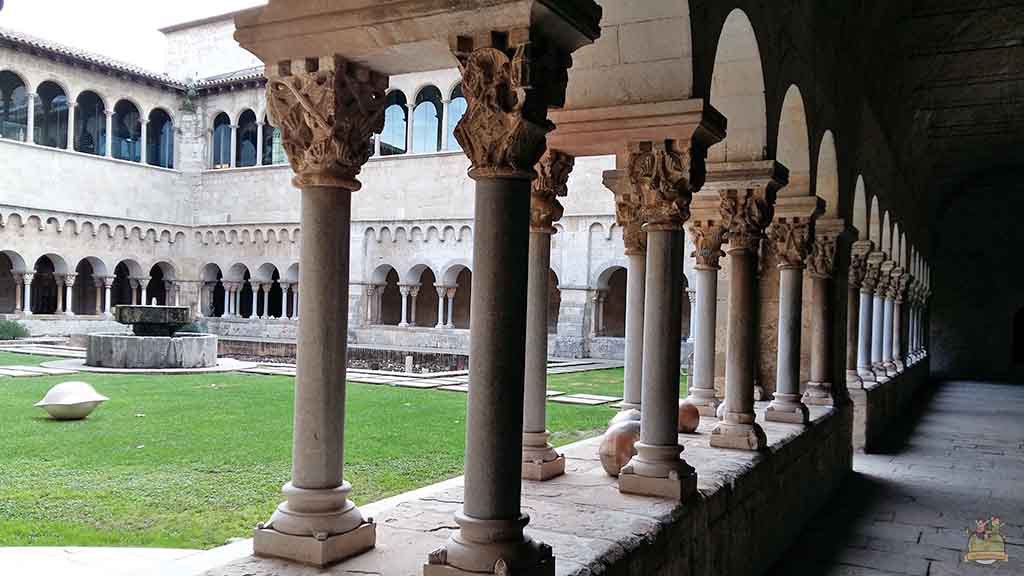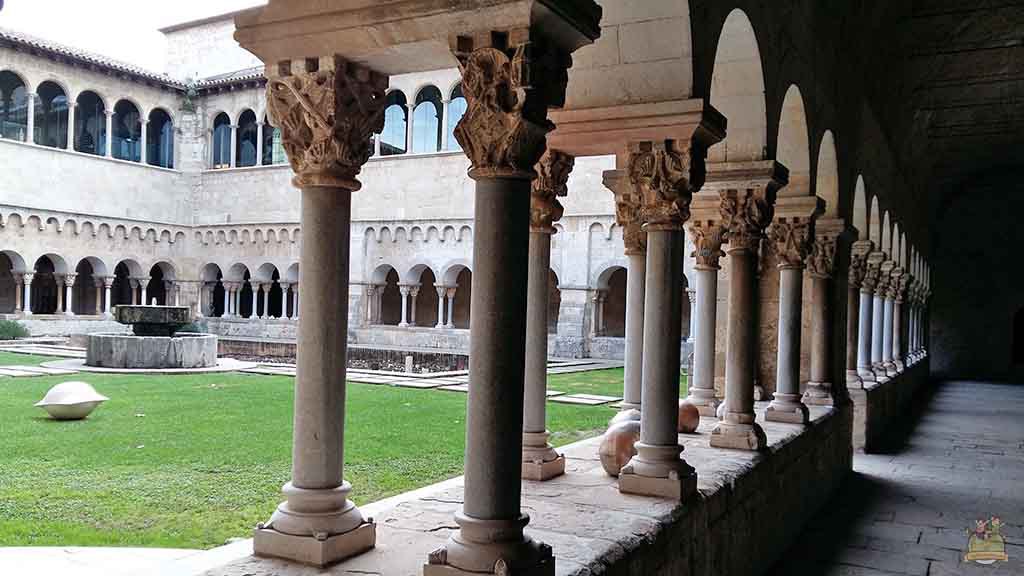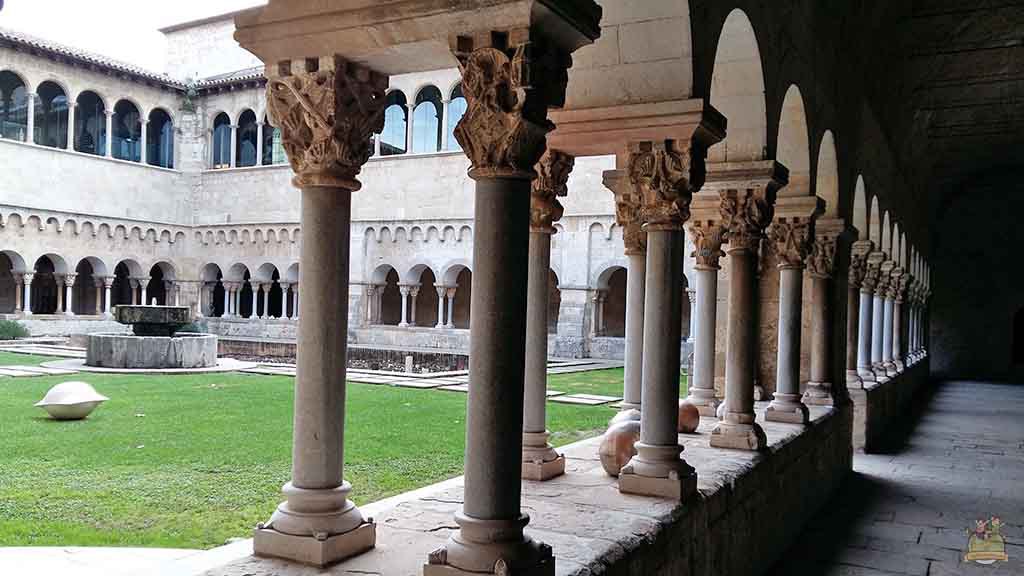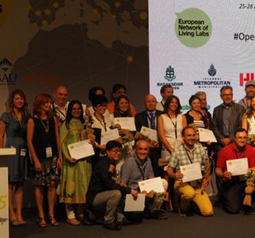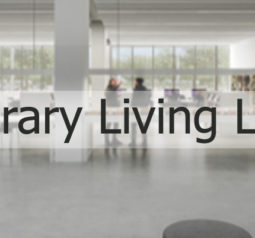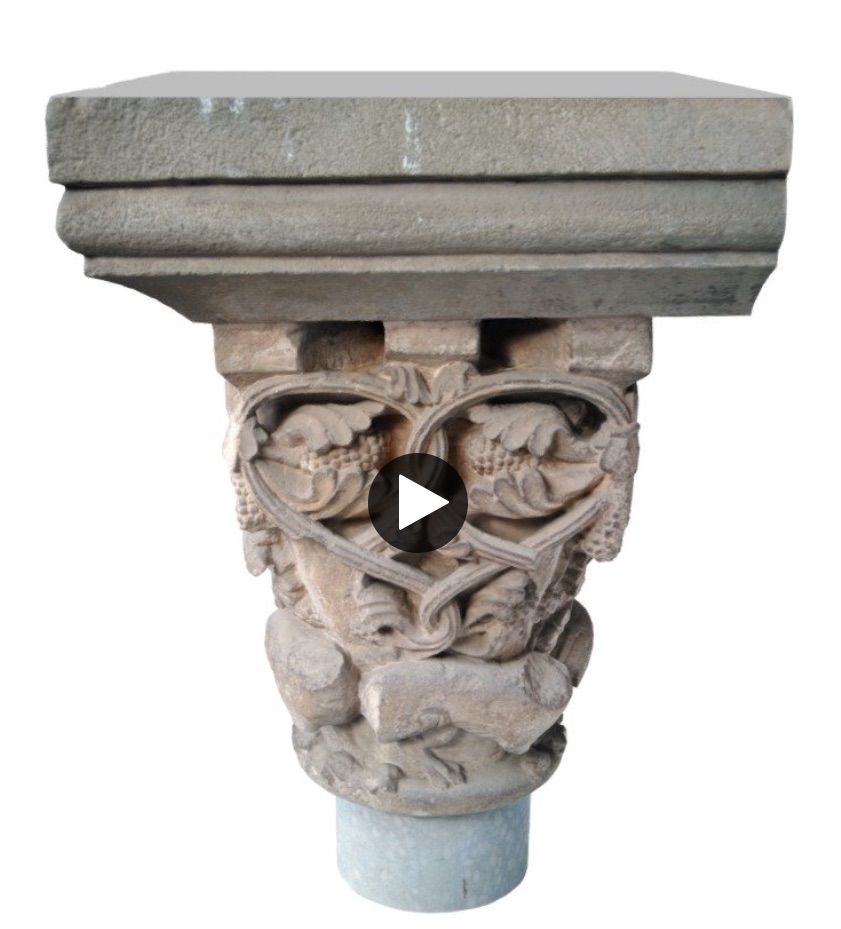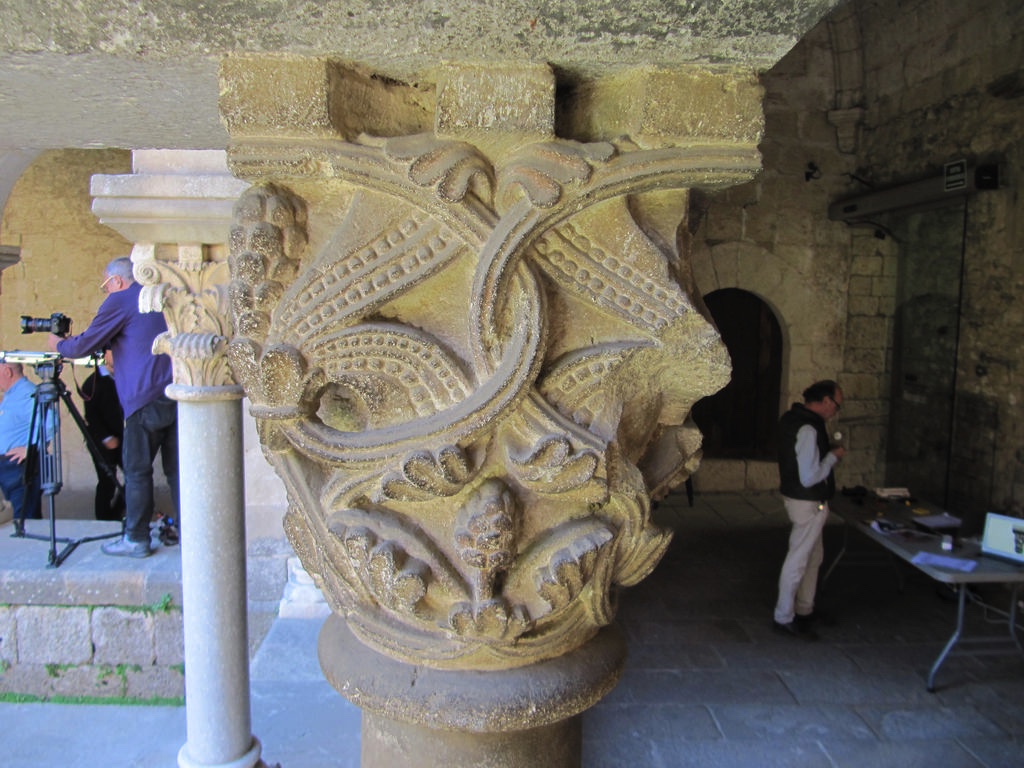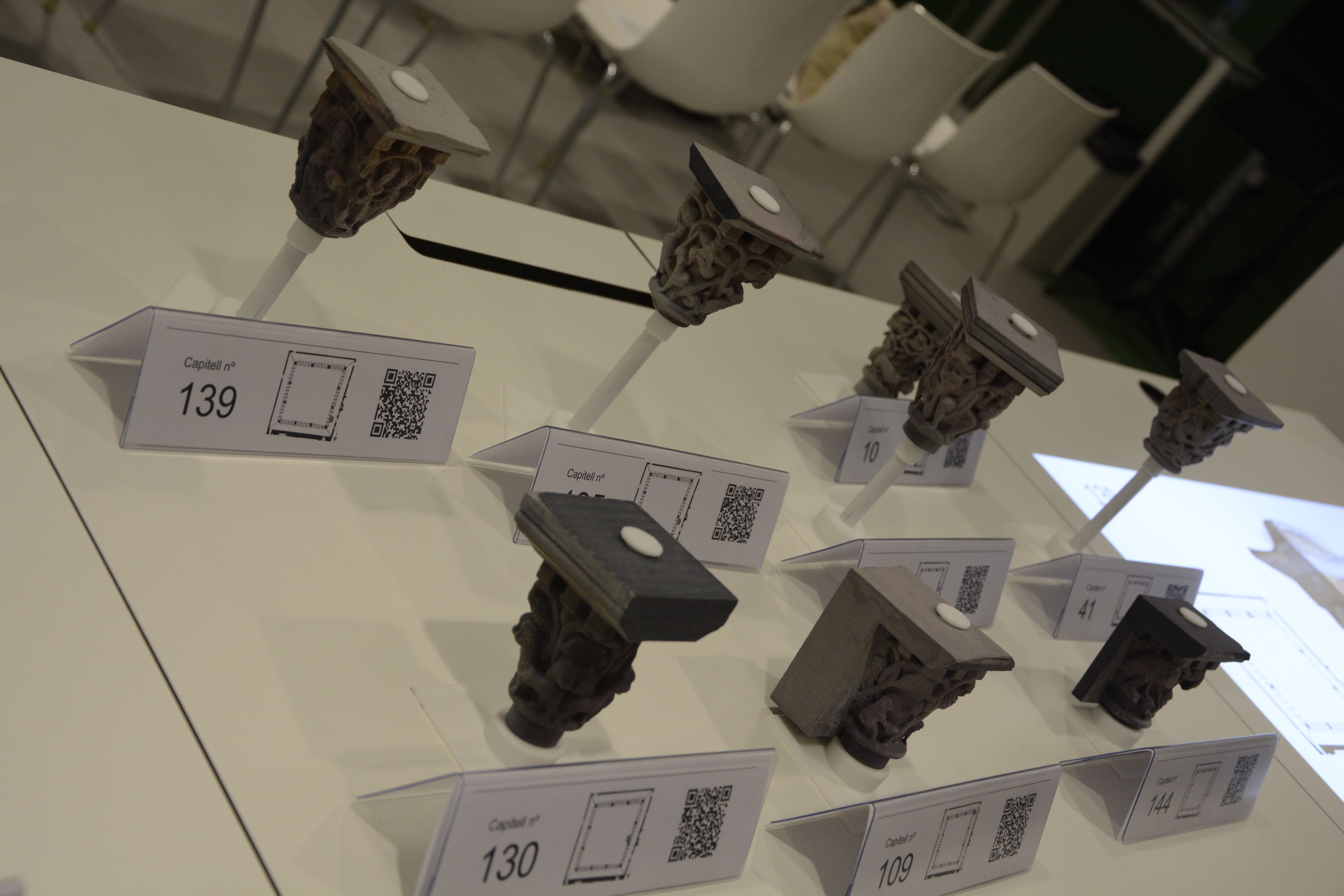LibraryLivingLAB: Citizens Co-Creating the City’s Digital Cultural Heritage
Register to the new session of ‘Scanning in 3D Sant Cugat’s Monastery capitals’
Schedule of Sessions:
- Wednesday 24th of April at 18.00 h: Photogrammetry training at the Library Living Lab
- Thursday 25th of April at 10.00 h: 3D capitals scanning at the Monastery of Sant Cugat
- Wednesday 230h of April at 18.00 h: Photogrammetry training at the Library Living Lab
Romanesque Capitals are Sant Cugat’s jewel of the crown
The 144 capitals of the cloister of the Monastery of Sant Cugat del Vallès are one of the masterpieces of the Catalan Romanesque. They represent biblical scenes, vegetal motives, fantastic animals and delicate geometric figures.
The Library Living Lab users (@LibraryLivLab) together with the Computer Vision Centre (@CVC_UAB) and the Museum of Sant Cugat (@Museusstc) have developed a protocol for scanning the capitals, in order to obtain the first ever catalog in 3D of the masterpieces. This will allow both the web visualization of the 3D models and the creation of physical replicas.
This is an open science and innovation project, its results are within the reach of users, professionals and researchers, and it represents a step further towards the democratization of access to knowledge and innovation for all people.

All work is licensed under a Creative Commons Attribution-NonCommercial 4.0 International License.
Sessions and project documentation
3D Scanning Capitals: POST-PHOTO Creating the 3D Models
In this session we will go for the model creation from the photos.
3D Scanning Capitals: POST-PHOTO Creating the 3D Models
In this session we will go for the model creation from the photos.
3D Scanning Capitals: POST-PHOTO Creating the 3D Models
In this session we will go for the model creation from the photos.
3D Scanning Capitals: Learning Photogrametry
In this session we will go for the basics about photogrametry.
3D Scanning Capitals: Scanning at the Cloister
In this session we will go the MONASTERY to take pictures of the Capitals.
3D Scanning Capitals: Learning Photogrametry
In this session we will go for the basics about photogrametry.
3D Scan of the Cloister Capitals of the Monastery
In this activity we will scan the 144+1 Capitals of the Cloister.
The Capitals
So far, we have processed 11 of the 144 capitals. The process is still underway and the final objective is to obtain the models of all 144 capitals with the citizens who wish to participate in the initiative.
The Cloister Plan
The Cloister Plan represents the placing of every chapter in the cloister’s plant. It facilitates the proper identification of the capitals.
There are several ways to number the capitals, and each one of them is more or more appropriate depending on the task. We have followed the classical numbering.
In the initial video, you can see the location of each capital in each of the four wings of the cloister.
We invite you to use this reference as a useful tool to enjoy the capitals.
The Protocol Description
The capital scanning process is based on basic photogrammetry techniques. Anyone with a mobile phone can make several photos around an object, so that it is covered visually. This is one of the strengths of this project, as it allows it to be accessible to everyone.
- The first step is to make this set of photos, at least 20.
- Then, these photos must be processed by a specific software. There are several options, open and payment options. If you want to know more how it has been possible to scan the capitals, we invite you to read the following document, where you will find a booklet here.
- Once the 3D model has been generated, we can make a web like this – to enjoy digital models – or also make 3D impressions – like those we have in the Library Living Lab at the Biblioteca Miquel Batllori in the neighborhood of Volpelleres, Sant Cugat del Vallès.
Models printed in 3D allow an observation of the physical object, and the exhibition of all models allows a group perspective of the collection. Each capital has its own reference number and QR code associated to the web page where we can find the corresponding file. This allows you to link the physical object with the digital object.
The process described is of a general nature, and allows c0-create the new digital cultural heritage by all.
Reference documents
- El Claustre del Monestir de Sant Cugat : de porta en porta. Pere Vivó i Gil.
- L’Església del Monestir de Sant Cugat del Vallès. Pere Vivó i Gili.
- Resenya didàctica dels capitells del claustre :Monestir de Sant Cugat del Vallès. Manel Pla i Carrer
- El Costumari del monestir de Sant Cugat del Vallès. Estudi introductori i transcripció a cura d’Efrem E. Compte. Prefaci d’Anscari M. Mundó
- El Monestir de Sant Cugat : una eina de treball : proposta didàctica : Educació Secundària Obligatoria, E.S.O. Alfredo Arechavala … [et al.]
- El Monestir de Sant Cugat : una eina de treball. Alfredo Arechavala … [et al.]
- Monestir de Sant Cugat del Vallès : guia històrica i arquitectònica. text: Rafael M. Bofill i Fransí ; fotografies: Martín García i Manolo Laguill
- Formes i fons al monestir de Sant Cugat del Vallès. Rafael M. Bofill
- Monestir de Sant Cugat del Vallès. Jordi Ambrós Monsonís
- Capitells romànics dels claustres de Galligants i SantCugat. [enregistrament vídeo]. [Josep-Humbert Oyamburu i Boix]
- L'”Encolpium” de Sant Cugat. Rafael Bastardes i Parera
- Guia descriptiva histórica y artística del Monasterio de Sant Cugat del Vallés.
- Claustro.com. Juan Antonio Olañeta

